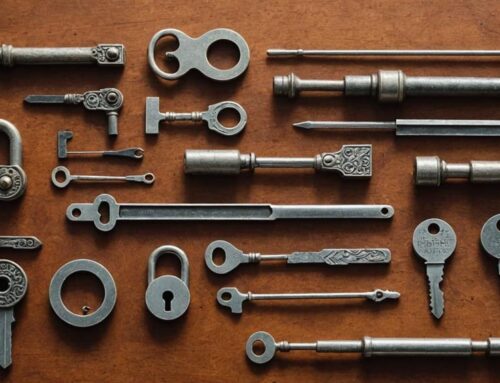Set out on a historical journey through lock security evolution. From ancient wooden and metal locks with basic bolt and warded designs to the intricate pin tumbler locks of the mid-19th century, security mechanisms advanced. Key codes revolutionized access with unique notches and teeth, amplifying security levels. Then electronic locks emerged, integrating keypads and biometric scanners for heightened protection and convenience. Finally, the rise of biometric security with fingerprint and facial recognition technology pushed boundaries further. The intricate developments over time have shaped the modern security landscape, ensuring your valuables and property are safeguarded.
Key Takeaways
- Early locks: wood and metal, basic designs.
- Pin tumbler locks: precise pin alignment, increased security.
- Key codes: unique combinations, advanced security.
- Electronic locks: keypads, biometrics, enhanced features.
- Biometric security: fingerprints, facial recognition, cutting-edge protection.
Ancient Lock Mechanisms
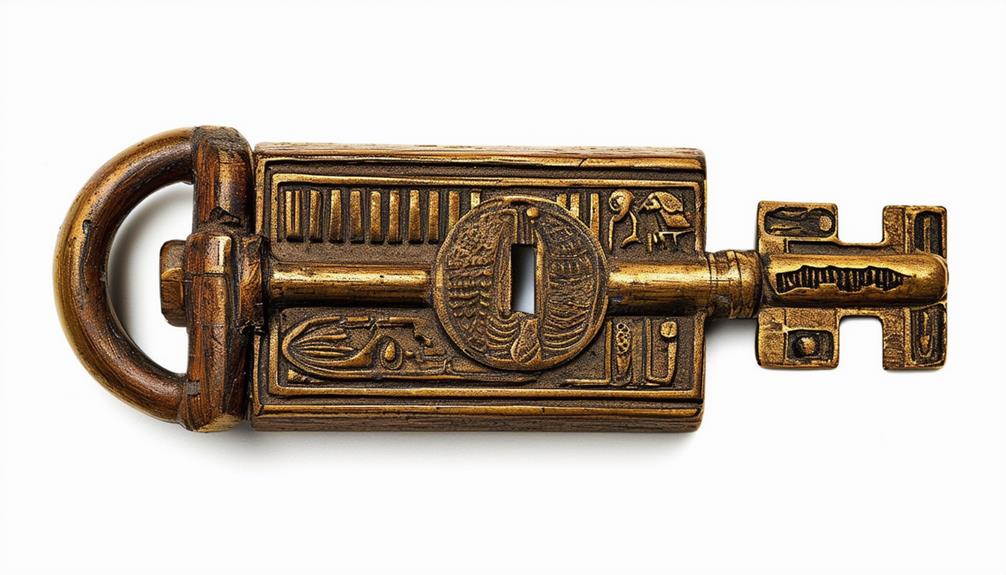
Ancient lock mechanisms were rudimentary yet effective in their simplicity. Back in the day, security was a top priority, leading to the evolution of lock mechanisms over time.
These early locks were often made of wood or metal and consisted of basic designs like the bolt lock and the warded lock. Techniques such as lock picking methods were also developed during this time, showcasing the ingenuity of early locksmiths. Despite their simplicity, these mechanisms were effective at securing valuables and property.
Lock mechanisms evolved as societies advanced, with more intricate designs emerging to meet increasing security needs. The evolution of lock security saw the development of combination locks in ancient Rome and Egypt, where intricate mechanisms required precise alignment to open.
These innovations laid the foundation for more complex lock systems in the future. As the demand for heightened security grew, locksmiths and inventors continued to refine lock mechanisms, paving the way for modern-day security systems.
The journey from basic bolt locks to sophisticated electronic security systems showcases the fascinating evolution of lock security throughout history.
Invention of Pin Tumbler Lock

During the mid-19th century, the invention of the pin tumbler lock revolutionized the field of lock security. This marked a notable turning point in the history of lock security and the evolution of locks. The pin tumbler lock introduced a new level of complexity and sophistication compared to earlier lock mechanisms, offering reliable security through precise pin alignment. This design made it much more challenging for unauthorized individuals to pick or manipulate the lock without the correct key, effectively providing safeguards against casual unauthorized access.
In a pin tumbler lock, a set of pins of varying lengths is divided into pairs, with one pin in each pair sitting above the shear line and the other below. To open the mechanism, the pins must be precisely aligned along the shear line by inserting the correct key. This design made it much more challenging for unauthorized individuals to pick or manipulate the lock without the correct key.
The pin tumbler lock's innovative design laid the foundation for modern lock systems and remains widely used today due to its effectiveness in providing security. This invention greatly enhanced the safety of valuables and property, shaping the landscape of lock security for years to come.
Introduction of Key Codes
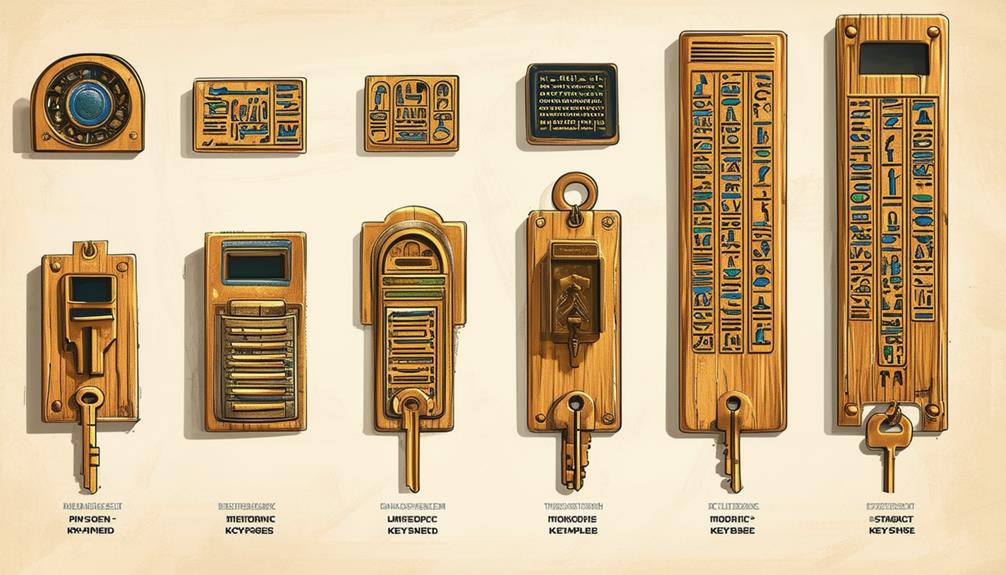
The introduction of key codes marked a significant advancement in lock security technology. Key developments in locks took a leap forward with the implementation of key codes, providing a more secure and convenient way to control access. By assigning unique combinations of notches and teeth to keys, key codes allowed for more intricate locking mechanisms that were challenging to pick or duplicate.
This historic lock security innovation made it harder for unauthorized individuals to gain entry without the correct key, enhancing overall security measures. High-security locks, which feature advanced key control systems, further exemplify the evolution of locking technology, ensuring that duplication remains nearly impossible for unauthorized users high-security lock features.
Key codes revolutionized the way locks were designed and operated, offering a standardized method for key creation and duplication. Locksmiths could now easily reproduce keys based on the specified codes, streamlining the process of key replacement and access control.
The introduction of key codes also paved the way for master key systems, enabling different levels of access within a property using a single key code structure. This advancement in lock security laid the foundation for future developments in key-based access control systems.
Electronic Lock Systems
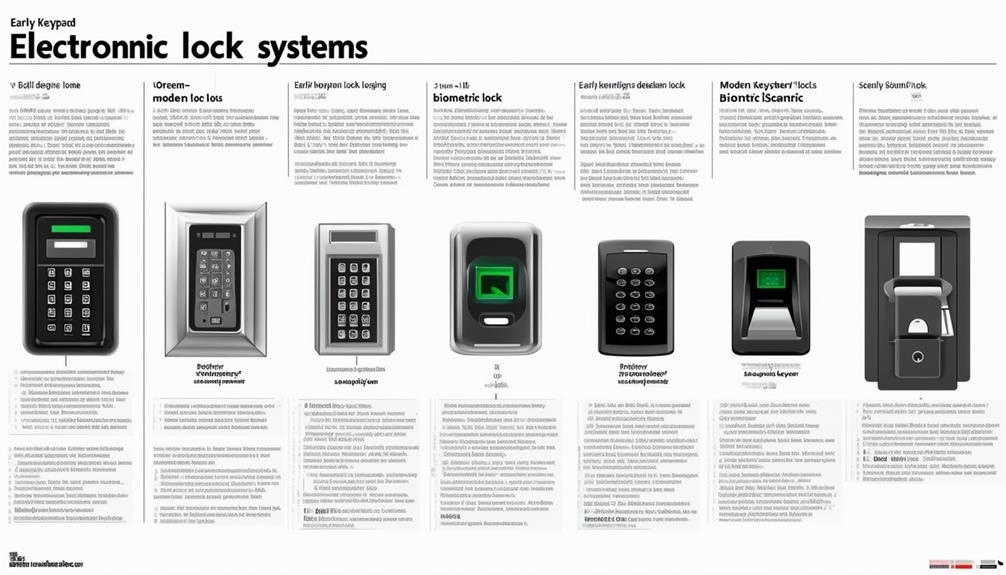
Continuing the evolution of lock security beyond physical key mechanisms, Electronic Lock Systems represent a significant advancement in access control technology. These systems utilize electronic components like keypads, card readers, or biometric scanners to grant or restrict access.
Unlike traditional locks that rely solely on a physical key, electronic systems offer enhanced security features such as audit trails, remote access control, and the ability to quickly change access permissions. Additionally, many modern electronic locks incorporate strong encryption and regular updates to safeguard against hacking attempts, further enhancing their security effectiveness.
The introduction of Electronic Lock Systems marks a milestone in lock security advancements, providing a more robust defense against unauthorized entry compared to historical lock mechanisms.
Modern lock security now integrates seamlessly with digital technologies, offering increased convenience and flexibility in managing access to secured areas. These systems are often programmable, allowing for customized access levels for different users and time-sensitive access restrictions.
Rise of Biometric Security
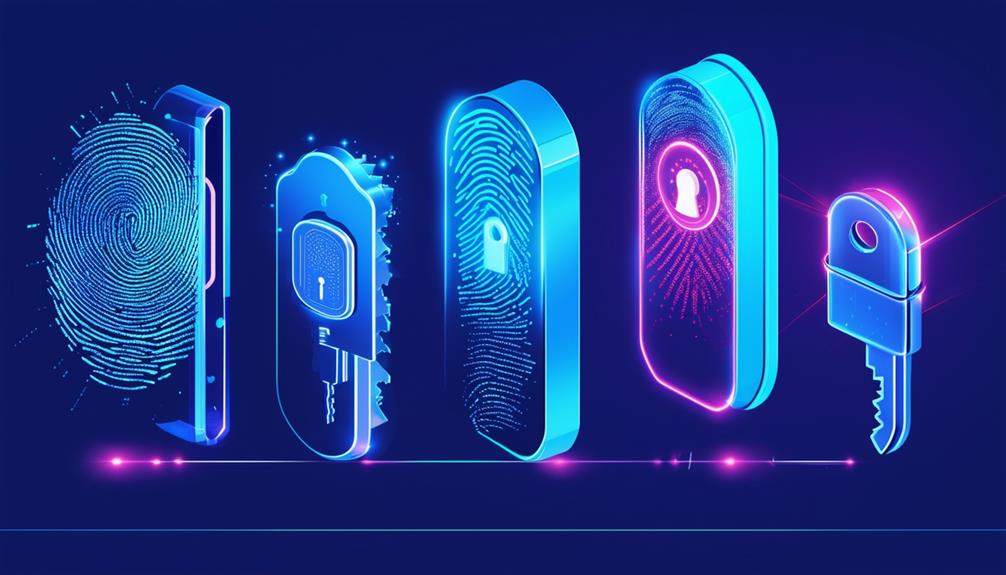
With the increasing demand for enhanced security measures, biometric technology has emerged as a cutting-edge solution in access control systems. Unlike traditional locks that rely on keys or codes, biometric security systems use unique human characteristics like fingerprints, facial recognition, or iris scans to grant access. This advancement marks a significant shift in security practices, offering heightened protection against unauthorized entry and potential breaches.
In addition, integration with smart home systems can enhance the functionality of these biometric locks, allowing for seamless connectivity and improved security management through user-friendly apps, as highlighted in the popular Bluetooth lock options.
The rise of biometric security builds upon historic locksmithing advancements by introducing a more personalized and secure approach to access control. By utilizing individual biological traits, biometric systems enhance security levels, making it harder for intruders to compromise protected areas. This evolution represents a fusion of technology and security, catering to the growing need for robust protection in various settings, from residential properties to high-security facilities.
Incorporating biometric security into access control systems not only increases safety but also streamlines the authentication process. Users can access secured areas efficiently without the need for physical keys or remembering complex codes, simplifying the overall user experience while reinforcing security measures.
Frequently Asked Questions
How Did Ancient Civilizations Protect Their Valuables Without Locks?
Ancient civilizations protected valuables without locks by using methods like hiding places, guards, and intricate puzzles.
They relied on secrecy, deception, and physical barriers to safeguard their possessions. Walls, hidden compartments, and even traps were common strategies.
While locks as we understand them weren't present, resourcefulness and ingenuity played essential roles in protecting treasures and important documents.
Trust in the community and strategic placement of valuables were also significant elements in security.
Who Were the Key Figures Behind the Invention of the Pin Tumbler Lock?
The key figures behind the invention of the pin tumbler lock were the skilled craftsmen and engineers in ancient Egypt and Mesopotamia.
They developed the concept of using pins of varying lengths to secure doors and chests.
This innovative design allowed for greater security and control over access to valuable items.
These early inventors laid the foundation for the modern locks we use today, making their contribution to security systems invaluable.
What Factors Led to the Establishment of Standardized Key Codes?
To establish standardized key codes, factors like the need for increased security, mass production efficiency, and ease of key duplication played significant roles.
These considerations led to the development of standardized key codes to guarantee that keys could be easily replicated and distributed while maintaining a level of security across multiple locks.
Standardized key codes helped streamline the manufacturing process and enhance overall security measures for various lock systems.
Are Electronic Lock Systems More Secure Than Traditional Key Locks?
Electronic lock systems are becoming more prevalent due to their enhanced security features.
Notably, studies have shown that electronic locks can be up to 10 times more secure than traditional key locks.
With features like encryption, audit trails, and remote access control, electronic systems provide added layers of protection against unauthorized entry.
The convenience and advanced security measures of electronic locks make them a popular choice in modern security systems.
How Accurate and Reliable Are Biometric Security Systems in Identifying Individuals?
Biometric security systems offer high accuracy and reliability in identifying individuals. Your unique biological traits, like fingerprints or facial features, are difficult to replicate, making these systems very secure.
They provide an advanced level of protection compared to traditional methods. However, occasional false readings can occur due to factors like environmental conditions or changes in your biometric data.
Conclusion
As you reflect on the evolution of lock security, remember that just like the intricate mechanisms of a lock, your own growth and development have been shaped by key moments and experiences. Embrace the twists and turns of life, the challenges that have made you stronger, and the keys that have opened new opportunities. Keep evolving, just like the locks that have protected us through the ages.









